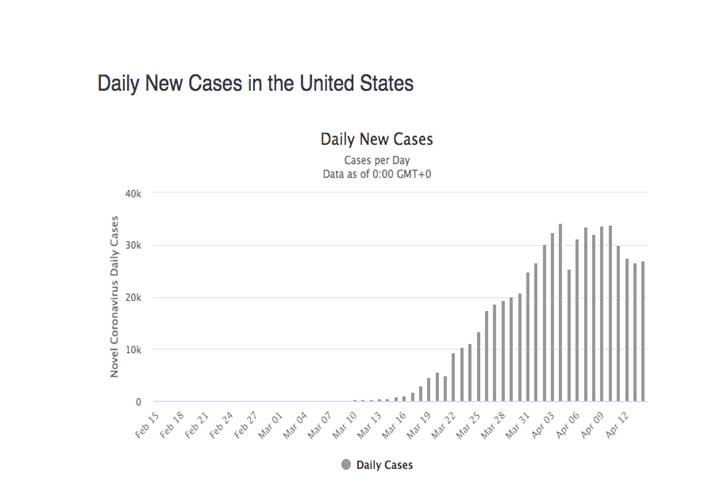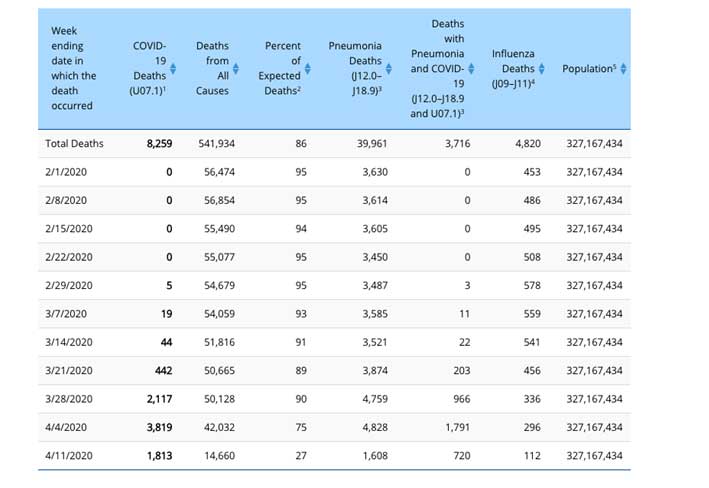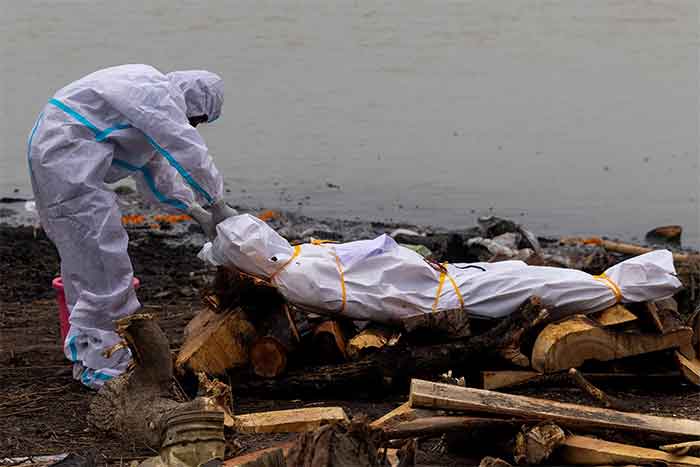Co-Written by Anandi Sharan and Nihal Ahmed

After the declaration of a COVID-19 pandemic by the WHO, around 4 billion people are locked down. In India the loss of GDP due to the COVID-19 pandemic may be 10% of GDP and there may be zero growth and very low prospect of recovery of the industrial sector in India. The IMF expects the GDP of advanced countries to decline by 6.1% in 2020, and in the wake of the COVID-19 pandemic suddenly helicopter money is being paid directly by central banks to households in developed countries to alleviate unemployment and jumpstart state capitalism. Some of the physical changes in the environment due to lockdown are momentous, unthinkable two months ago. In Bangalore it is so quiet and the air is so clean that my ears hear sounds from miles away, and neither of my nostrils have been blocked even for a minute since March 10th 2020, something that has not been the case for decades. There is so much oxygen in the air that the heart beats stronger, the lungs fill up joyously. Those stuck in cities who got heart disease, respiratory infection, and tinnitus from four wheeler traffic and pollution are now blessedly relieved. We got healthy and safe working conditions without a struggle.
Capitalism manoeuvred itself into a dead-end of gigantism. Its demise brings enormous benefits. We don’t want it resurrected. The developed countries had since the 1990s completely ignored the Sustainable Development Goals of the UN. They thought these were external to their system. It turns out they were not. But we don’t want the global pharmaceutical industries and the advanced economies and China dictating the health or other priorities of the working class in developing countries after the pandemic. Though the agricultural sector and allies sectors are not locked down in India, from one day to the next the workers have had starvation inflicted on them of the kind usually induced only by a personal health catastrophe. The lack of compassion for the backward castes and classes by the ruling classes and forward castes in India during this epidemic is an absolute personal catastrophe for the majority, whether or not they are suffering from COVID-19 infection. Not only does the motto health is wealth apply to humans, but conversely, wealth is health, and losing one inevitably results in losing the other. In the USA 16.8 million unemployed have already applied for unemployment benefit and the number is expected to rise to 195 million full time jobs lost. In India 400 million workers may lose their jobs. The working class and backward castes in developing countries need their own Governments in order to create helicopter money for the good of the workers.
As it turns out, so far, world-wide, only 10 million people out a world population of 7.8 billion have been tested for COVID-19, only under 2 million have been found to be symptomatic, and only 126’000 people of died, of whom 229426 individuals were tested in India and of those 10307 were confirmed positive on April 14th 2020 and 377 have died. (1) This compares with an annual global death rate over 606 million of whom 10 million die in India every year. The daily death rate of the epidemic in the USA may already have peaked on April 9th 2020. (2) (See the chart below: Daily New Cases in the United States)

It could be that this drop is because it was the Easter weekend, one will have to see. But it is likely the peak has passed. Dr. Anthony Fauci, an epidemiologist who is the White House coronavirus task force member, stated in a research paper in February 2020 that “the overall clinical consequences of Covid-19 may ultimately be more akin to those of a severe seasonal influenza (which has a case fatality rate of approximately 0.1%) or a pandemic influenza (similar to those in 1957 and 1968) rather than a disease similar to SARS or MERS, which have had case fatality rates of 9 to 10% and 36%, respectively.” (3) The Centre for Disease Control in the USA has published causes of death data for the period January to mid April 2020 for the USA. The rate is 86% of expected deaths and COVID-19 deaths account for only 1.52% of deaths. (4) See figure 1.
Figure 1

Thus half way through the pandemic we can say that the pandemic is under control in most countries, and even if there are new cases in developing countries in the coming days this is not a lethal disease. Maybe every human on the planet is infected, at least infinitesimally, with the virus and only a selected few are showing symptoms and thus everyone that succumbs inevitably has the virus. It is impossible to know. But what is apparent is that the lockdown is being used by developed countries as much for gathering data for the pharmaceutical industry as for doing anything concrete for developing countries. Let us take a hypothetical case in Italy. An asymptomatic COVID-19 infected person is rushed to hospital for chronic kidney pain. The paramedics sense fever and instantly take the nasopharyngeal swab to check for COVID-19 too because this is mandated by law. Two hours later the RTPCR results showed positive and the media reports it as a new case. An hour later in the hospital the patient suffers a cardiac arrest. The patient has been recorded as a positive COVID-19 case. But doctors and researchers know the death was due to chronic kidney pain related to sudden cardiac arrest. What purpose does it serve to record this as a COVID-19 death? Even if the Government is tracking COVID-19 incidence for its own reasons this does not mean that this is a death due to COVID-19. On the other hand it could be that countries that routinely vaccinated their infants with the BCG vaccination have a lower COVID-19 infection rate. But so far this research is not a priority for even the Government of India, who are following WHO directions on this virus. Nothing about the epidemiology of COVID-19 is clear because its behaviour is crucially determined by what society does. And whilst what pharmaceutical companies and developed countries are up to lacks clarity, we can at least say, midway through the lockdown, that in India at least we are very effectively keeping down the death rate of COVID-19.
So what next?
The working class in developing countries must understand that with this COVID-19 outbreak there is renewed competition between two state capitalist countries the USA and China and their allies to create markets for their pharmaceutical products. Developing countries should avoid getting drawn into this agenda, however much the COVID-19 lockdown declared by the WHO is precisely this, an attempt to draw all countries into the vaccine programmes of the global pharmaceutical industry. Developing countries should not be sucked into this substantialist approach to health promoted by the pharmaceutical and medical industries (privileging things rather than relations, in this case viruses, anti-bodies, vaccines etc.) We must avoid at all cost designing health systems around vertical World Bank programmes that try to fit 7.8 billion people into a one stop solution to a single disease such as what is happening with this COVID-19 management programme.
The IMF debt relief for 25 countries with a combined population of 416 million is only up to just over USD 1 per person. But developing countries can resist having to borrow again from the new state-sponsored capitalism of the USA and Europe by using their own central banks and their own sovereign currencies. It is possible and preferable to create free universal national health systems without any technology or finance from developed countries. Let’s say we stay locked down until the curve flattens. There’s no guarantee that there won’t be a second wave of infections. Moreover, even if a vaccine is developed by the pharmaceutical industry, the vaccines could become ineffective as the virus mutates and becomes unresponsive. It would not be feasibly to keep shutting down the agricultural sector, even if all other sectors are closed forever, because agriculture and forestry are intrinsic to survival of the human species on a day to day basis as well as the long term. Thus health systems must be locally available and locally managed and locally accountable so that small outbreaks can be contained locally without reference to any larger system. At the same time let us remind ourselves that not a single one of the at least 99 employees infected with COVID-19 after attending a Biogen buffet dinner and cocktails at the Marriott Long Wharf overlooking Boston Harbor in February 2020, died. In Kerala too dozens of COVID-19 patients have been cured. There are anti-viral drugs available, along with oxygen, that help a COVID-19 patient with a reasonably strong immune system to recover. They are manufactured extremely cheaply in India and can be licensed very cheaply to other developing countries. COVID-19 is not incurable, it is that the pharmaceutical industry in developed countries forgot to work on antivirals and commercialise them fast enough because they were not lucrative, and now the world is in lockdown until they have played catch up. To be free of these global agendas, every nation, indeed every Gram Panchayat and town ward, should have hospitals, and should seek and possess a replica of every deadly strain of virus that emerges as a potential threat to them. And in the long run vaccines should become available to protect the species as a whole from these viruses. But virus research is only one part of a holistic approach to health that most importantly must include a level of wages for workers sufficient for families to have nutritious food and traditional medicinal plants for a strong immune system.
Conclusion
If the Indian backward castes and economically backward do not rise up and demand land redistribution for all, inequality will be exacerbated and life after the lockdown for them will be an utter and total tragedy, as the Rupee will fall to Rs 200 per USD and there will be no self-reliance nor bargaining power vis a vis the developed countries for India. The working class in developed and developing countries must struggle for a Government that puts people before profits. They need an agriculture and forestry based livelihood and local health systems to adapt to climate change. These sectors cannot pay interest or repay money. They need to be funded by money that only Governments can print, – or collect from tax havens. If all nations have an agricultural and forest economy and health system a family could live on Rs 200’000, or USD 2565, a year, then Rs 260 lakh crore would be needed to cover the money supply needs of Indians. All countries together would need USD 20 trillion to cover the money supply needs of their people in the various national currencies. The fossil fuel industry and the rest of the commercial energy sector will almost certainly not have a determining role in the new world since we do not know how many decades it will take the renewable energy industry to reach the production capacity to provide 8 billion people with 1 kW of installed renewable energy capacity each. Large parts of today’s dominating sectors may, in fact, disappear, if they not already done so. What matters is that energy, medicine and food from plants and a balanced carbon cycle is available for the benefit of all human beings equally and for other living things too.
References
- https://github.com/datameet/covid19/blob/master/data/icmr_testing_status.json
- https://www.worldometers.info/coronavirus/country/us/
- https://www.nejm.org/doi/full/10.1056/NEJMe2002387
- https://www.cdc.gov/nchs/nvss/vsrr/COVID19/index.htm
Anandi Sharan was born in Switzerland, educated in the UK, lived in Karnataka villages for many years, now lives in Bangalore and last year worked in Araria District in Bihar. She works now on trying to find the best money system to help people adapt to climate change especially in India.
Nihar Ahmed is a Life Science PhD scholar at Christ deemed University, Bangalore, specialising in Botany.
SIGN UP FOR COUNTERCURRENTS DAILY NEWS LETTER

















































